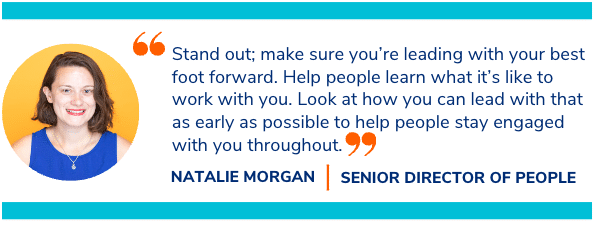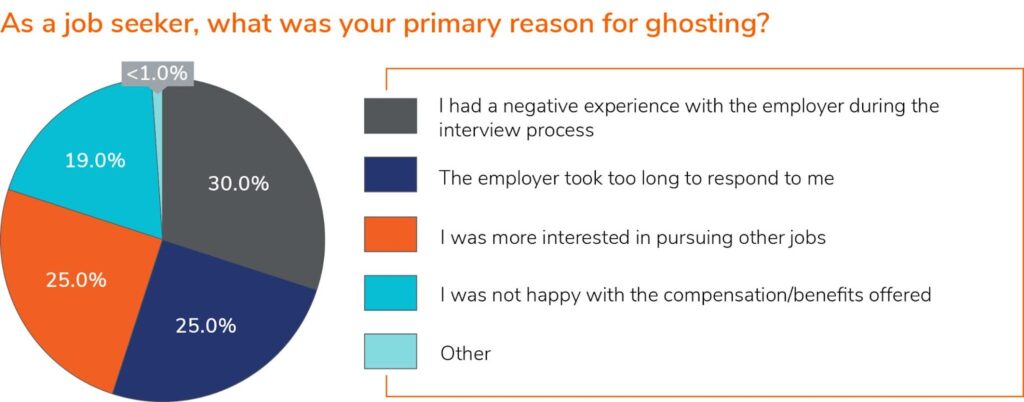It’s been nearly three years since the beginning of the COVID-19 pandemic, and in many ways, life feels a bit more normal. On the other hand, small business owners have had one curveball after another thrown their way in the last few years and many are still trying to recover from the unprecedented challenges.
One of the biggest struggles business owners have faced in the last three years has been the rapidly changing labor market and the impact it’s had on their ability to make the right hires for their team.
So: why is hiring so hard right now? And are there any changes employers can make to their hiring process to make it a little easier?
Let’s break down some of the most common struggles for employers when it comes to hiring and learn what you can do to combat those challenges.
The state of the labor market
An impending recession is at the top of everyone’s minds. Though one key indicator typical of recessions is employment levels, and currently unemployment is still very low.
According to the Bureau of Labor Statistics, total payroll employment increased by 223,000 in December 2022, and the unemployment rate edged down to 3.5 percent.
There has been plenty of buzz around layoffs, but most small businesses, particularly those with frontline roles, are actually still looking to increase their staff, and many are finding it difficult to hire enough people for their teams.
Another important trend to keep in mind: For the last year, job openings have outnumbered job seekers consistently. There are plenty of open roles and not enough people to fill them.
So what does all of this mean for small business owners? And what day-to-day impact does it make on hiring the right people for your team?
Hiring and recruitment challenges in 2023
Increased competition for talent
As mentioned, the number of open jobs currently exceeds the number of job seekers. This means that competition for talent is high.
One trend we’ve heard from many of our clients this year is that instead of just competing with others in their industry for talent, they now feel the pressure to compete with companies of every industry for workers! Entry-level position job seekers have options. Companies like Amazon, Target, and Walmart are always hiring, and have the resources to do so on a large scale. Plus, gig economy jobs like Uber and DoorDash are attracting job seekers who want greater flexibility in their schedules.
When it comes to competing for talent, remember that first impressions matter. Focus on building a great employer brand and sharing what makes your company stand out with applicants early on. CareerPlug’s Senior Director of People, Natalie Morgan shares her advice: “Stand out; make sure you’re leading with your best foot forward. Help people learn what it’s like to work with you. Look at how you can lead with that as early as possible to help people stay engaged with you throughout.”
The speed of your hiring process is also important. Reach out to candidates before your competition with text recruiting and try to get interviews automatically scheduled as quickly as possible.

Higher expectations from employees
Another big shift over the last couple of years has been changing job seeker sentiment. The Great Resignation referred to a period of time starting in early 2021 when millions of people quit their jobs. This seemed to be sparked by the global pandemic and the opportunity it gave workers to reevaluate what they wanted from their employers.
Employees know that they have leverage and if they aren’t getting what they need from one company, they can easily go to another. As a result, the pressure is on businesses to become better places to work to attract – and retain – more employees.
To stay ahead of this hiring and retention challenge, you need to have the right approach to attract job seekers. Across the board, there has been a demand for higher wages. Start by seeing how yours stack up with others in the industry by using compensation resources on sites like Glassdoor and Indeed. Make necessary adjustments if it’s feasible and include compensation in the job posting.
Offering the right benefits is also important. Of course employees appreciate the standard benefits like health insurance and 401Ks, but lower budget perks like more PTO and professional development opportunities can also go a long way.
Low-quality job postings
Some hiring challenges are beyond your control – others are not. It’s important for employers to take a step back and assess what their current hiring process looks like and how to make it better at attracting top candidates. The tactics that were working just a few short years ago may not work now.
Start by evaluating the quality of your job postings. Many employers don’t realize that they are making recruiting harder than it needs to be by not creating a great job description that attracts top candidates.
Candidates want to see an accurate description of the role, benefits and compensation information, and to get an idea of what it’s like to work for your company. Highlight your company culture and values and showcase any special perks you might have.
Natalie Morgan says, “What some of our clients have done on the job posting level is reorganize sections, starting with benefits, perks, and culture before responsibilities. It demonstrates the priority of the company and that’s had a good response.”
For more information on crafting a great job description, check out this video where Natalie shares more advice:
Candidate ghosting
Candidate ghosting refers to the candidates who suddenly stop all communication with an employer during the hiring process. Unfortunately, it’s something our clients are still struggling with during hiring.
According to our 2023 Candidate Experience Report, 36% of candidates have ghosted an employer. Other studies suggest higher numbers: Forbes reported that 94% of employers say they have been ghosted during a hiring process. We asked candidates their reasons for ghosting employers.

Their answers provide some insight on what you can do to prevent ghosting and keep candidates more engaged during your hiring process:
- Schedule interviews promptly. Be flexible with your time and use phone screen calls as a simple first step.
- Conduct great interviews. This involves being prepared, asking appropriate questions, creating a welcoming environment, and being respectful in interactions with candidates.
- Reach out early and often. Give job seekers clear next steps. In the war for talent, don’t keep candidates waiting. Reach out and thank them within an hour of applying. Provide them with links where they can learn more, like your careers page and employer review sites. Keep them engaged while they wait to hear back.
- Use an applicant tracking system to organize your hiring process and put all of your applications in one place. This makes it easier to track candidates from one stage of the process to the next. Use an ATS like CareerPlug to keep candidates moving forward and prevent them from slipping through the cracks.

Hiring is hard. CareerPlug makes it easy.
CareerPlug is an applicant tracking system like no other. Our software is built on proven hiring playbook with tools that automate and speed up the most tedious parts of your hiring process.
GET A FREE DEMO